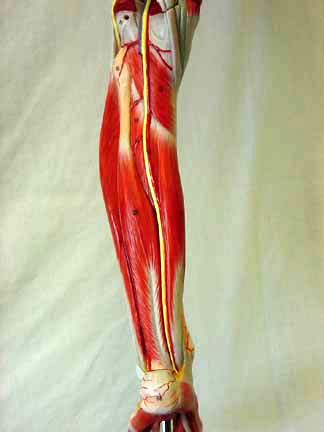
The mutation was identified on chromosome 7. However, in 2011, the clinical phenotype was reanalyzed, and members of that family were reclassified and subsequently underwent whole genome analysis. It was not associated with any known distal myopathy loci at that time. Patients presented with distal myopathy, also called distal ABD-filaminopathy or William’s disease. A study performed in 2005 reported this condition in a large family from Victoria, Australia. Previous studies have reported this condition in two families. Muscle biopsy usually shows a variation in fiber size without myofibrillar aggregates, vacuoles, or inflammation. Magnetic resonance imaging usually reveals the involvement of the posterior leg muscles. Nerve conduction studies are normal however, electromyography reveals myopathic motor unit potentials. Serum CK levels are normal or mildly elevated. This condition shows a slow progressive course and often spares the anterior leg and respiratory muscles. This disease usually manifests during the third decade of life with intrinsic hand muscle weakness, which may progress to calf muscle atrophy. It could also present as an allelic disorder with overlapping myofibrillar myopathy or distal myopathy features with upper limb predominance. Notably, met251Thr and Ala193Thr mutations have been reported in such cases. The genetic culprit is identified as a missense mutation in the ABD. The pathogenic variant was identified as FLNC (NM_001127487.1): heterozygous, c.577G>A (p.Ala193Thr).ĭistal ABD-filaminopathy is an autosomal distal myo- pathy. We performed muscle genetic panel testing, which showed a variant that likely contributed to distal myopathy with posterior leg and anterior hand involvement (distal actin-binding domain -filaminopathy). Genetic testing for facioscapulo- humeral muscular dystrophy was within the normal range, and Pompe disease testing revealed negative results. The muscle specimen showed low fat content, and staining performed for various types of limb girdle dystrophy revealed normal results. No inflammation and degenerating or regenerating fibers were observed. Biceps biopsy revealed mild non-specific changes with variation in fiber size. Electromyography revealed a shift toward lower frequencies indicating mild myopathy however, nerve conduction studies were normal. Laboratory investigations revealed a serum creatine kinase (CK) level of 726 U/L.

She was able to stand from a seated position without difficulty however, she required support to stand from a squatting position. She could perform the tandem gait test but with difficulty. She developed a waddling gait, and although she could stand and walk on her heels, she was unable to walk on her toes. Motor tone, coordination, and sensory examination were normal. Muscle strength was as follows: hand grip 4-/5, finger extensor 4-/5, wrist extension and flexion 4/5, biceps 5/5, deltoid 5/5, hip flexors and extensors 5-/5, knee flexors 5-/5, knee extensors 5-/5, foot dorsiflexion 5-/5, and planter flexion 3/5. The thighs and upper arm muscles (particularly the biceps) showed mild muscular atrophy.

Physical examination showed a well-appearing woman with painless cervical and lumbosacral spinal motion. She reported increasing difficulty with using a computer mouse, with opening jars, doing up buttons and wearing slippers and observed significant difficulty using her arms and hands. The patient showed clear deterioration in her condition on subsequent visits. She reported falling on one occasion owing to leg weakness. Her bowel and bladder control was normal. Her weakness worsened her upper limbs were initially unaffected, and she did not observe symptoms of ocular or bulbar weakness, numbness or tingling, neck weakness, myalgia, or a change in urine color. She observed that she needed to hold the hand rail when climbing stairs and was not confident wearing high heels. The patient was well until her first trimester of pregnancy when she developed lower limb weakness and had difficulty getting out of low seat chairs or climbing stairs. We discovered a family history of similar issues in her mother however, her mother was diagnosed with spinal stenosis and eventually required the use of a wheelchair. We describe a 30-year-old woman who presented with features suggestive of probable muscle disease.


 0 kommentar(er)
0 kommentar(er)
